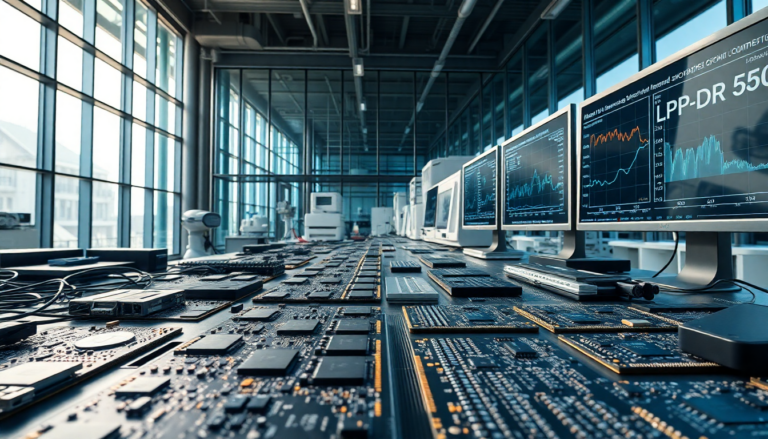Argomenti trattati
The landscape of memory technology is constantly shifting, and the recent announcement of the LPDDR6 memory standard by the JEDEC Solid State Technology Association marks a significant milestone in this journey. As the market moves from DDR4 to DDR5, it’s crucial for both consumers and industry players to grasp the nuances of this new standard. Officially known as JESD209-6, LPDDR6 promises to enhance performance while keeping power consumption low, positioning itself as a key player in the future of mobile and portable computing.
Market Dynamics and the Transition to LPDDR6
As we watch the trajectory of the memory market, it’s essential to acknowledge the ongoing shift from the widely-used DDR4 to the more advanced DDR5 standards. Analysts have long predicted a convergence between DDR5 for desktops and LPDDR5 for notebooks, and with the introduction of LPDDR6, that prediction seems to be coming to fruition. This new standard operates at a lower voltage, designed to optimize power consumption while delivering robust performance enhancements.
One of the standout features of LPDDR6 is its scalability, with device densities ranging from 4 Gbits to a whopping 64 Gbits. This flexibility allows manufacturers to cater to a diverse range of consumer needs—from budget-friendly devices to high-performance machines. Plus, JEDEC’s specifications reveal that LPDDR6 includes two sub-channels per die, boasting 12 signal lines that significantly enhance data transmission rates. How exciting is it to think about the potential for faster devices right at your fingertips?
According to preliminary reports, LPDDR6 memory data rates are set to soar from 10.667 Gbps to an impressive 14.4 Gbps, bringing a bandwidth of 32 GBps along for the ride. This leap positions LPDDR6 as a formidable successor to the current LPDDR5X, which supports data rates from 6.7 Gbps to 10.667 Gbps. These incremental improvements could mean a substantial performance boost for users who crave speed and efficiency in their devices.
The Role of Major Manufacturers and Future Trends
The support of major memory manufacturers like Micron, SK Hynix, and Samsung highlights the importance of the LPDDR6 standard in the industry. These giants are pivotal in shaping the future of memory technology, and their endorsement of LPDDR6 signals a collective move towards standardizing this advanced memory type. Moreover, TrendForce has forecasted the announcement of DDR6 memory in 2025, suggesting that the evolution of memory standards is far from over. Are we ready for what’s next?
As DDR4 production begins to wind down, we’re already seeing a rise in DDR4 memory prices—an expected market adjustment as demand shifts to newer technologies. The transition to DDR5 is on the horizon, with manufacturers eager to promote the adoption of the more advanced DDR6 standard. This eagerness to innovate reflects an industry in constant pursuit of higher performance and more efficient memory solutions.
Implications for Consumers and Industry Stakeholders
The arrival of LPDDR6 and the anticipated DDR6 standard carries significant implications for everyone involved—from consumers to industry stakeholders. For consumers, the advancements in memory technology mean faster, more efficient devices that can keep up with increasingly demanding applications. This is especially relevant in today’s world, where mobile computing and high-performance gaming are becoming the norm. Are you ready to experience the difference?
For industry stakeholders, particularly manufacturers and developers, these advancements open up new avenues for innovation and product development. Embracing the latest memory standards can enhance product offerings, ensuring that companies remain competitive in a rapidly evolving market. Moreover, keeping a pulse on these trends can help investors make informed decisions regarding tech investments, as the demand for cutting-edge memory solutions continues to grow.
In conclusion, the LPDDR6 memory standard represents a crucial step in the evolution of memory technology. As we move forward, it becomes increasingly important for everyone involved to stay informed about these developments and their implications for the future of computing. What are your thoughts on how these advancements will shape the devices of tomorrow?

